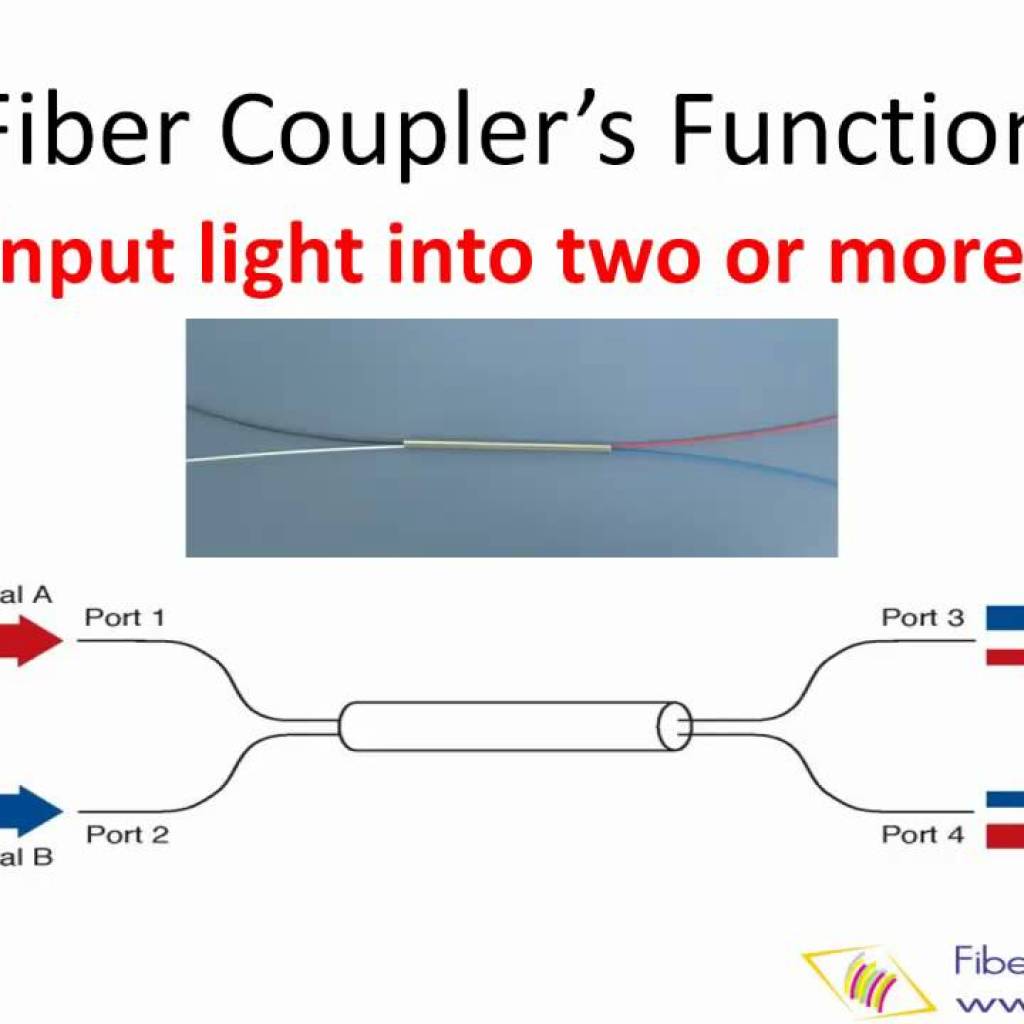Contents

Source: YouTube
Understanding Fiber Couplers: An Essential Component in Fiber Optics
Introduction to Fiber Couplers
Fiber couplers are integral components in fiber-optic systems, serving as devices that manage the distribution and direction of light within fiber networks. They are primarily used to split or combine light signals. There are two main types of fiber couplers: those that distribute light between fibers and those that couple light from free space into a fiber. This article focuses on the former, which are used to connect and distribute signals between optical fibers.
Types of Fiber Couplers
Thermally Tapered and Fused Couplers
One common method of creating fiber couplers involves thermally tapering and fusing two or more fibers so their cores come into close contact. This process allows light to transfer between the fibers over a specific length. These couplers can be designed with polarization-maintaining fibers to produce polarization-maintaining couplers or splitters.
Side-Polished Fiber Couplers
These couplers use fibers that have been polished on the side to provide access to the core, enabling the coupling of light between fibers.
Planar Lightwave Circuits
Another approach involves planar lightwave circuits, which include branching waveguides. Fibers are coupled to the inputs and outputs of these circuits, allowing for efficient light distribution.
Bulk Optics Couplers
Bulk optics, such as microlenses and beam splitters, can also be used to create fiber couplers. These components are often coupled to fibers, a process known as “fiber pig-tailing.”
Y Couplers and Star Couplers
By omitting one input port of a 2-by-2 fiber coupler, a Y coupler (or T coupler) is formed. This type of coupler is particularly useful for applications requiring power monitoring, as it can direct a small fraction of power to one output. Star couplers, with multiple inputs or outputs, are utilized in applications like cable-TV signal distribution.
Operational Characteristics of Fiber Couplers
Directional Coupling
Most fiber couplers are designed as directional couplers, meaning they efficiently transmit light from input to output without significant back-reflection. The return loss specification indicates how effectively the coupler minimizes back-reflection, often achieving values of several tens of decibels.
Coupling Loss and Bandwidth
In single-mode fiber systems, combining inputs of the same optical frequency into a single-polarization output can result in excess losses unless the optical phases are precisely controlled. However, different wavelength inputs can be combined with minimal loss, a principle utilized in dichroic couplers and wavelength division multiplexing (WDM) systems. The bandwidth of a coupler is limited by its wavelength-dependent coupling strength, with typical bandwidths being a few tens of nanometers.
Applications of Fiber Couplers
Fiber couplers are used in various applications, including telecommunications, where they facilitate signal distribution and management. They are critical in fiber amplifiers for combining pump and signal light, and in WDM systems for multiplexing multiple wavelength channels.
Conclusion
Fiber couplers are versatile and essential components in fiber-optic networks, offering solutions for signal distribution and light management. Understanding their types and operational characteristics is crucial for designing efficient optical systems.
This blog post provides a comprehensive overview of fiber couplers, highlighting their types, operational characteristics, and applications in fiber-optic systems. The format ensures clarity and ease of reading, while the use of headings and subheadings organizes the content effectively.

Source: MeFiberOptic.Com
Feel free to comment your thoughts.



